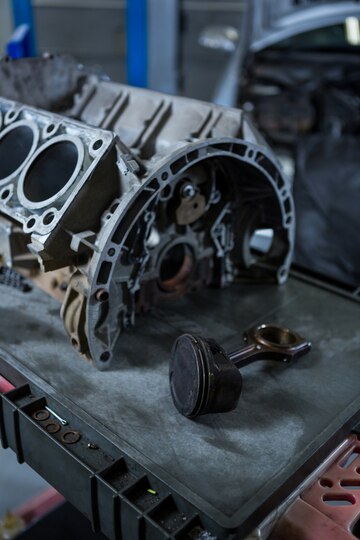The crankshaft is a vital component of your car’s engine, responsible for converting linear motion into rotational force. When the crankshaft begins to wear or fails, it can lead to significant engine issues and even render your vehicle inoperable. Recognizing the signs of crankshaft problems early can help prevent costly repairs and ensure your car’s continued reliability. Here are ten key indicators that your car’s crankshaft may need replacement:
1. Engine Vibration:
Excessive engine vibration, particularly at idle or low speeds, can indicate crankshaft wear or imbalance. This vibration may be felt throughout the vehicle and could worsen as engine speed increases.
2. Knocking or Rattling Sounds:
Unusual knocking or rattling noises coming from the engine, especially under load or acceleration, may suggest worn crankshaft bearings or other internal components. These noises can indicate imminent crankshaft failure if left unaddressed.
3. Oil Leaks:
Leaks of oil from the engine or crankcase may be a sign of crankshaft seal failure. As the crankshaft rotates, it generates pressure that can cause seals to degrade over time, leading to oil leaks and potential engine damage.
4. Engine Misfires:
Crankshaft issues can disrupt the precise timing of engine combustion, resulting in misfires, hesitation, or loss of power. If you experience frequent misfires or engine stumbling, it may indicate crankshaft-related problems.
5. Excessive Oil Consumption:
A failing crankshaft seal or worn bearings can allow oil to leak into the combustion chamber, leading to increased oil consumption. Keep an eye on your car’s oil levels and monitor for any unexplained drops.
6. Engine Overheating:
A damaged or misaligned crankshaft can affect the circulation of coolant and oil within the engine, leading to overheating. If your car consistently runs hot or experiences coolant loss, it may be a sign of crankshaft problems.
7. Loss of Engine Power:
A compromised crankshaft can result in reduced engine power and performance. If your car feels sluggish or struggles to accelerate, it may indicate issues with the crankshaft or related components.
8. Difficulty Starting the Engine:
A worn or damaged crankshaft can affect engine compression and make it difficult to start the vehicle, especially in cold weather. Persistent starting issues may warrant inspection of the crankshaft and associated parts.
9. Visible Damage:
Inspecting the crankshaft visually can reveal signs of wear, scoring, or other damage. If you notice visible damage to the crankshaft or its bearings during maintenance or repair work, it may be necessary to replace the component.
10. Check Engine Light:
The check engine light may illuminate due to various engine-related issues, including crankshaft problems. If the light comes on and stays on, have your car’s engine diagnostics scanned to identify any crankshaft-related fault codes.
The crankshaft plays a crucial role in the operation of your car’s engine, and signs of its deterioration should not be ignored. If you observe any of the aforementioned signs of crankshaft problems, it’s essential to have your vehicle inspected by a qualified mechanic promptly. Addressing crankshaft issues early can prevent further damage, ensure your safety on the road, and extend the lifespan of your car’s engine.











